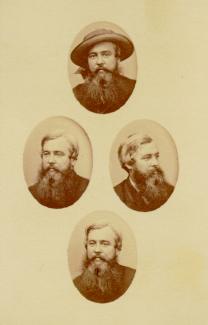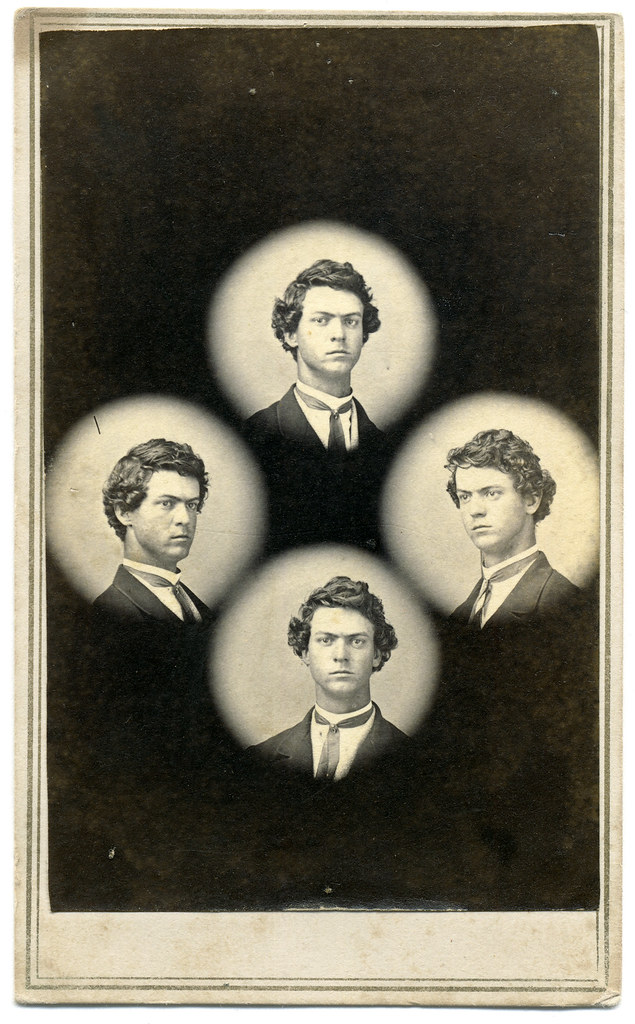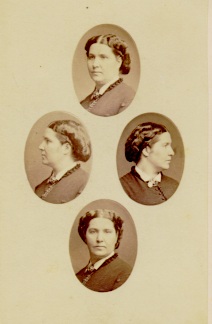A diamond cameo is when 4 portraits of the same person are placed onto paper in a diamond shape, each photo having the model looking in a different direction
In 1864 was when Diamond cameos started getting used, four small oval portraits were placed on a visit card in the shape of a diamond, each portrait being of the same person photographed in a different position. A special camera made by Dallmeyer was used in which the one glass negative was moved to a new position in the back of camera after each portrait had been taken, and when the paper print had been pasted on the card a special press was used to punch the four portraits up into a convex cameo shape. But if there had been a failure of just one of the four portraits through movement, poor expression or incorrect exposure meant that the plate had to be rejected and another four portraits made on a new plate.
In 1865 Frazer Crawford returned from Melbourne with ‘all the latest improvements and novelties in photography’ which included a camera to make Diamond Cameo photographs which, he said, was a new style that was ‘becoming so fashionable.’
Townsend Duryea
Townsend Duryea and his brother were American-born photographers who provided South Australians with invaluable images of life in the early Colony.
Townsend Duryea began making Diamond Cameos about May 1865, saying that as he was ‘supplied monthly with all the most recent improvements by the most eminent photographers of England and America’, he felt it was his duty ‘to the public of South Australia to introduce any improvement or novelty worthy of note with as little delay as pressure of business will admit of.’ The novelty of the Diamond Cameo must have worn off by the end of the year as he offered his camera for sale in December, ‘complete with press and dies.’
William Hall
William Hall was a Scottish photographer that moved to England in his twenties, he did this to create a partnership with Stephen Grey ion Brighton who was a portrait painter and photographer. By July 1854, the firm of Grey and Hall had established a ‘Photographic Institution’ at 13 St James’ Street, Brighton. In an advertisement dated 13th July 1854, Grey & Hall announced the opening of their “General Photographic Institution”, where they made photographic portraits “by all the most recent and improved processes, by License of the Patentees”. In 1862 Hall brought a business premises at 21 North Street, Brighton. The building had previously been used as a lace and linen warehouse, but Hall successfully converted it into a photographic portrait studio. By the early 1860s, William Hall was mainly producing small carte-de-visite portraits at his photographic studio.
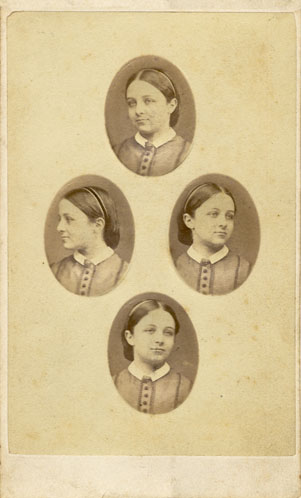
Portrait of a young woman, produced by William Hall of 21 North Street, Brighton (c1865). 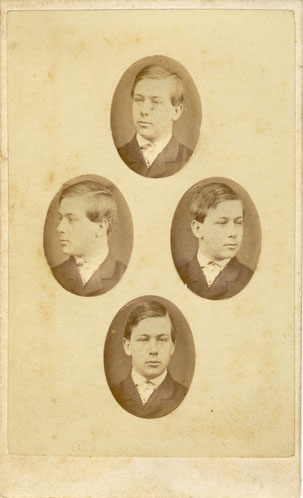
Portrait of a young man, produced by William Hall of 21 North Street, Brighton (c1865). 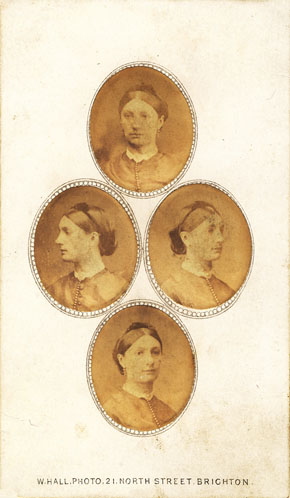
Portrait of a young woman, produced by William Hall of 21 North Street, Brighton (c1866). 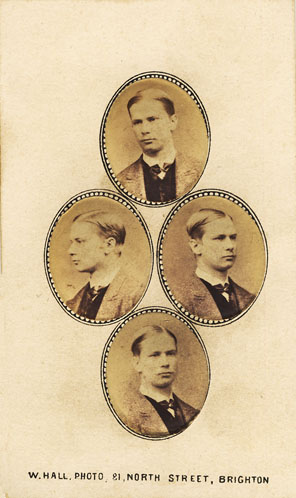
Portrait of a young man, produced by William Hall of 21 North Street, Brighton (c1867).
Between 1870 and 1873, William Hall was operating a photographic booth on the West Pier as well as a well-equipped photographic studio at 21 North Street, Brighton. The carte-de-visite portraits produced at Hall’s West Pier booth are distinct from the formal portraits taken at Hall’s main photographic studio in North Street. Whereas the portraits taken in Hall’s North Street premises contain the usual studio props – furniture, drapes, books, painted backcloth, etc., his West Pier portraits are more stark with plain backgrounds with only a collection of fake rocks and boulders to suggest a seaside setting. William Hall closed his West Pier studio after a couple of years.
Final Images

Here I have tried to make a diamond cameo out of some of the portraits I have taken. I edit this in photoshop by creating the ovals and putting the different angled portraits in them. I also tried to pick a neutral colour for the background as I wanted the photos to be the main focus. I like how in all the photos they are very similar as they were taken in the same lighting and the camera wasn’t moved, but the shadows move around the face due to the different positions of the face.
I tried to match the colour of the background to the with the other popular cameos so that they look similar but so that you can see the difference between the modern portrait and one taken in the early 1900s.
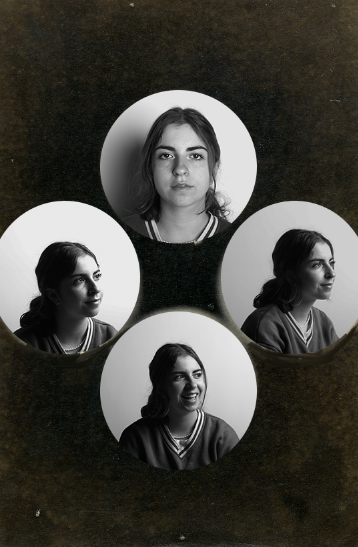
In this diamond cameo I have used an old cameo which I have chosen off google as my background and have used the framing tool to out line each circle where I want to place my portraits. I like how the black and white photos sit on the darker background, which isn’t fully black and has little specs of white which shows it age and gives an idea of when the background may have been used first. I couldn’t find a portrait which was looking to the left so i chose a similar portrait of her looking in the same direction but at a different angle and with different lighting.

